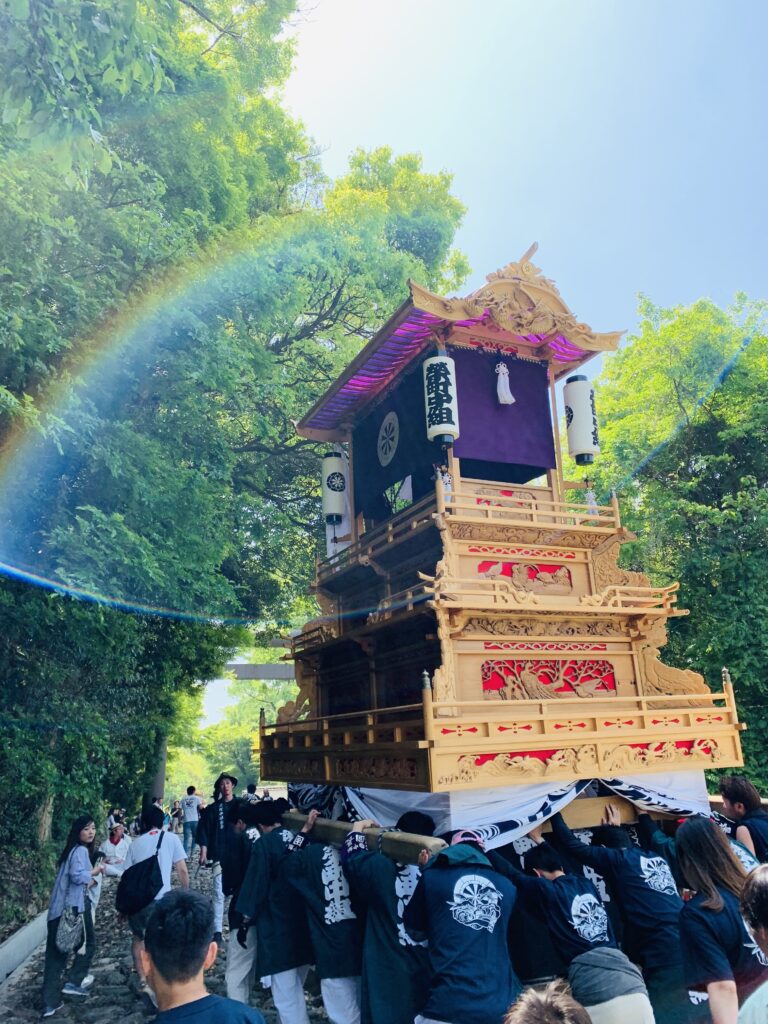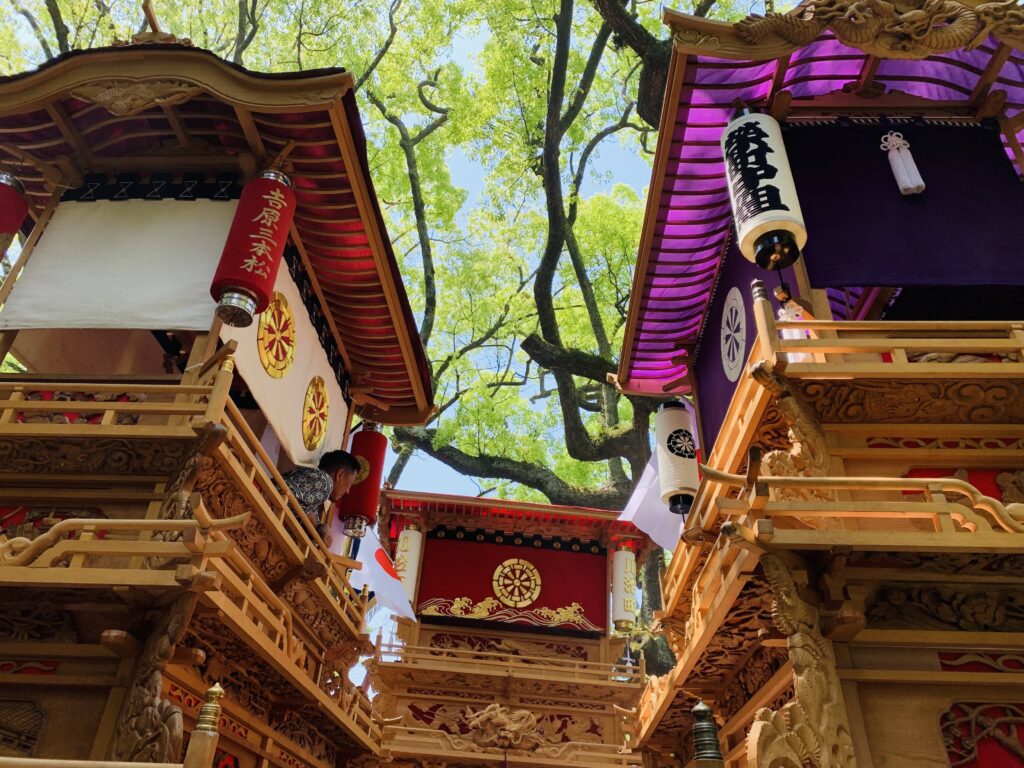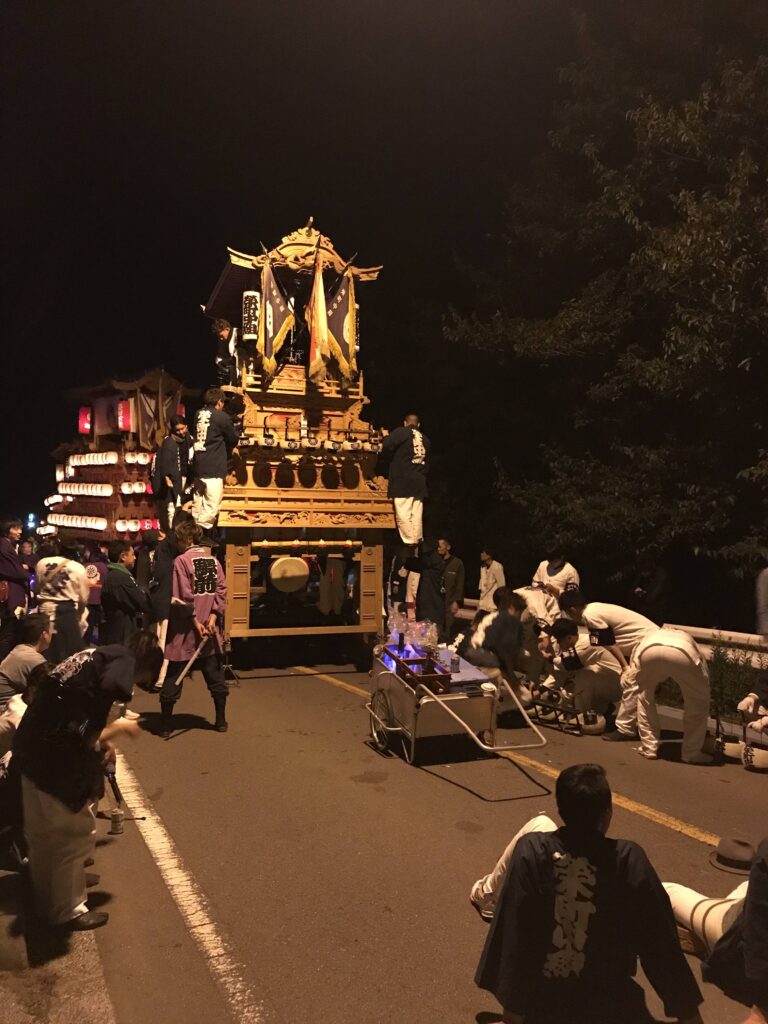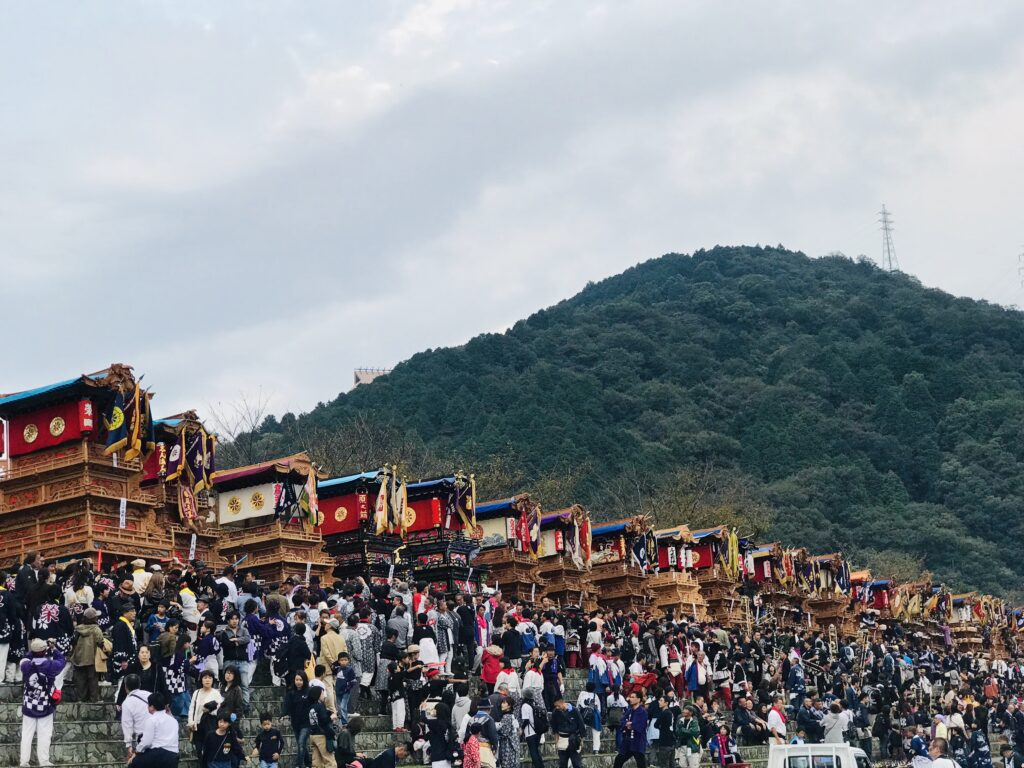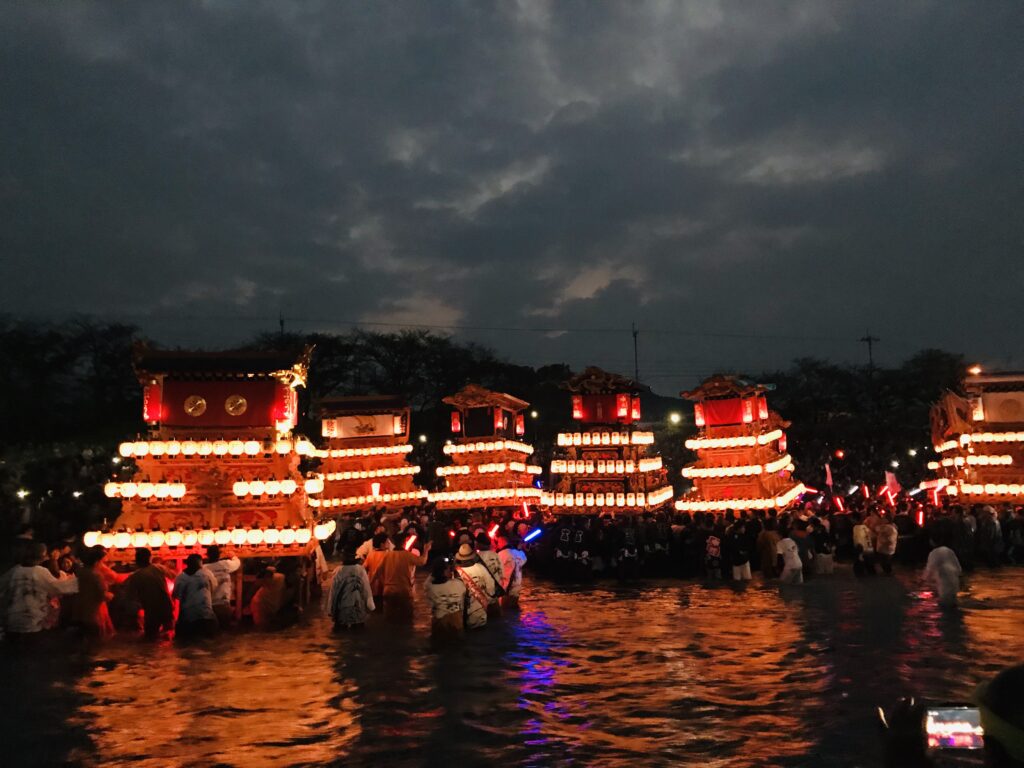Working for the Gods
Modeled after the famous Gion Matsuri, Saijo Matsuri boasts only 300 years of history, yet pride in the local festival is high, and those born in Saijo will return there from all corners of Japan in order to take part or simply enjoy three days of revelry in the company of the descending gods. Centered around Isono Shrine (a place of worship dedicated to the goddess Amaterasu), Saijo Matsuri involves more than eighty exquisitely decorated parade floats that are almost continuously carried around the city for two days and two nights. The present paper focuses on the human sacrifice aspect apparent during the festivities, where the participants are somehow unique in their stubbornness about carrying the danjiri (which weigh several hundred kilograms each) for two days, with very few breaks for eating and sleeping. Exhaustion and physical pain become apparent after the first hours, and by the end of the second day some of them sleep walk; nevertheless, sadness, not relief, is the prevalent emotion the day after the festival, when the danjiri are taken apart and stored in special warehouses, to be taken out again the next year.
Saijo Matsuri consists of four distinct events, each centered around a different shrine. The earliest takes place on October 10h~11th at Kamo Shrine, followed by Iwaoka Shrine on October 14th~15th, then the third (which is also the biggest one, and the focus of the present study) on October 15th~16th at Isono Shrine, and the last one—very similar in form and ritual development to the more famous Niihama Taiko Matsuri, which happens concurrently in the neighboring town of Niihama—on October 16th~17th at Iizumi Shrine. All three shrines are located within several kilometers of each other in Saijo City, and one of my informants told me that, when he was young (younger, to be precise, as he is still in his thirties), the men would challenge each other to participate in all the events, starting with Iwaoka Shrine and ending in the areas adjacent to Iizumi Shrine.
